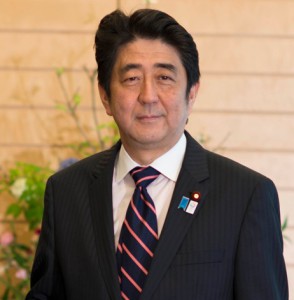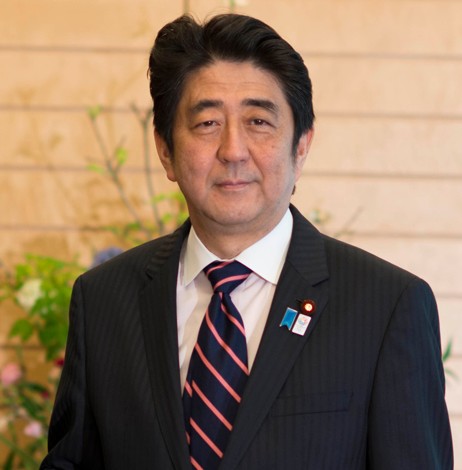On November 17, 2014, the Japanese economy, still the third largest in the world after the United States and China, entered a technical state of recession. In spite of increased stimulus measures by the Bank of Japan, Gross Domestic Product (GDP) fell in the third quarter of the year, between the months of July and September, by 1.6% after a disastrous second quarter decline of 7.3%. This marks the largest decrease of Japanese growth since the 2011 Tohoku earthquake and tsunami.
Shinzo Abe, Japan’s most powerful Prime Minister since Junichiro Koizumi (2001-2006), is facing a crisis of economic strategy having officially dissolved parliament and called snap elections for December 2014. A brief glance at recent Japanese political history suggests that Abe should be removed from office. Since Koizumi, Japan has had seven prime ministers, including Abe (2006-2007) in seven years. This is an extraordinary attrition rate considering Japan is an industrialized economy with low crime levels.
Abe however, remains a secure if controversial Prime Minister, with large electoral majorities in the Diet for his Liberal Democratic Party and strong support in the party base, in spite of wider domestic unease relating to reforms of Article 9. Likewise, he is faced with an opposition in the Democratic Party of Japan  (DPJ), still reeling from defeats in Representative and Councillor elections held in 2013 and the disastrous period in office from 2009 to 2012 under three DPJ Prime Ministers Hatoyama, Kan and Noda.
(DPJ), still reeling from defeats in Representative and Councillor elections held in 2013 and the disastrous period in office from 2009 to 2012 under three DPJ Prime Ministers Hatoyama, Kan and Noda.
Thus economics, not electoral opposition, will decide the legacy of Shinzo Abe and it is here where he faces a mountain– Japan’s continued economic stagnation.
Since 1990, Japan has been faced with increasingly diminished economic prospects. In 1988, the World Bank (WB) recorded Japanese economic GDP growth at an astounding 7.1%. Similar growth is now witnessed in China and was infamously a cause for concern in the United States during this period. The twin crises sparked by the collapse of Japan’s property bubble and subsequent banking crisis in 1991, saw growth collapse to 0.8% between 1991-1995 known collectively as Japan’s ‘Lost Years’. The 1998 Asian Financial Crisis led to a deep recession with a major contraction forcing Tokyo to further pump capital into Japan’s fragile banking system.
In the 2000s, Japanese GDP growth rarely passed 2.4%, even under Junichrio Koizum, and in 2009, Japan lost its principal export market, the United States due to that nation’s own economic crisis in 2009, Japan’s economy contracted by an astounding 5.5%.
In 2011, the People’s Republic of China, Japan’s historic regional rival in the Asia-Pacific, became the largest economy in the region and the second largest in the world. The economic trends between these two states could not have been more different. Chinese growth averaged 10% a year while Japan stagnated over the same period. Context is everything, however, and it is important to note that average GDP per head in Japan is $40,000 (USD) compared to $45,000 (USD) in China.
Japan’s contemporary identity post-1945, solidified during the expansions of the 1960s and 1980s was that of Asia’s leading economy, a powerhouse that produced advanced technologies in robotics, nuclear technology, computing and home entertainment. The last twenty years have been a deeply humbling experience for Japan. While its domestic living standards have remained high, its political identity has been stripped away as it drifted from economic crisis to political stagnation to economic crisis. This culminated in 2011 with the rise of China and the failure of Japanese institutions to respond to the Fukushima nuclear crisis.
Into this situation marched Shinzo Abe in February 2013 declaring ‘I am back and Japan is back too’.
Upon becoming Prime Minister, Abe implemented a bold economic strategy dubbed the ‘Three Arrows’ that would shake Japan out of its twenty year economic hibernation. The ‘First Arrow’ was increasing monetary supply from the Bank of Japan (BoJ) to boost Japanese exports via a depreciated yen.
The ‘Second Arrow’ was a series of massive stimulus packages. Starting in 2013, the BoJ pumped $1.4 trillion (USD) into the Japanese economy in a massive and unprecedented stimulus program, a financial shock and awe campaign of government spending that initially boosted growth.
The ‘Third Arrow’ of Abe’s strategy has proven to be more difficult, namely structural reform. Japan’s national debt amounts to 200% of GDP, the largest in the industrialised world and rising. Once again context is everything. Tokyo is correctly cited as an indebted economy with debt continuing to rise due to the DPJ’s decision in 2011 to shutdown Japan’s nuclear reactors, thus forcing a heavy reliance on imported fossil fuels.
The Bank of Japan, however, is also one of the world’s largest creditors and holders of national debt. Current reserves measured in 2013, place Japan holding over $1.174trillion (USD) in US debt. When American commentators claim the US economy is owned by China, they are only telling half the story for it is also owned by Japan as well, with a reduced danger of default.
Abe has sought to bring Japan’s government debt under control. In April 2014, with the Japanese economy growing, Abe initiated a controversial sales tax increase from 5 percent to 8 percent which crashed consumer confidence and is responsible for Japan’s current economic woes. In 1998, Prime Minister Ryūtarō Hashimoto initiated a similar tax increase and was removed from office following disastrous legislative elections, owing to a public backlash to the tax.
Though current political conditions favour Abe in the December elections better than they did for Hashimoto, Abe has placed his reputation on the success of the Three Arrows program. Even though the LDP party seems set to win in December, this renewed mandate will not save Abe if the average Japanese does not feel the economic benefits. Recent political history has shown just how expendable Japanese Prime Ministers are.




